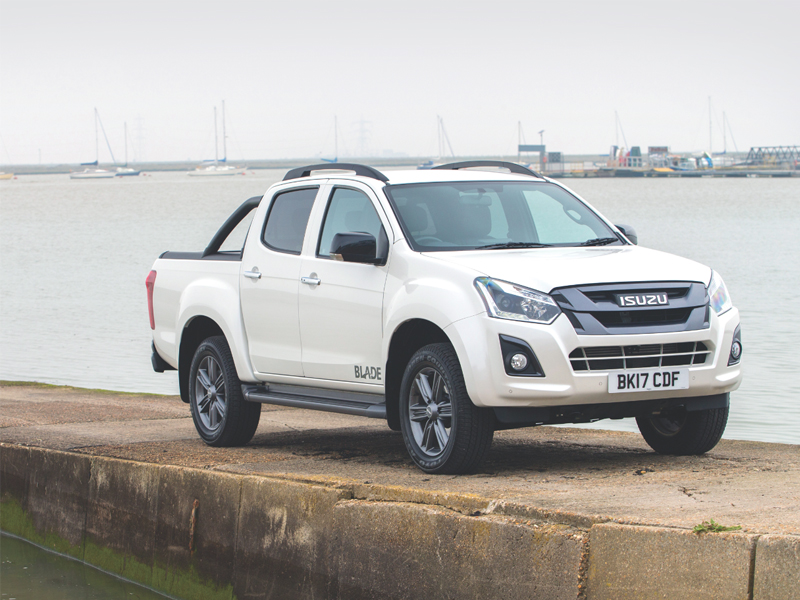Isuzu has finally launched the Euro 6 D-Max pick-up range, with a downsized 1.9-litre engine and no requirement for AdBlue, says Dan Gilkes.

All D-Max models now come with Hill Start Assist and Hill Descent Control. Utility models get Bluetooth, power windows and air-conditioning, while Eiger trim adds a reversing camera, alloys, body coloured bumpers and an improved audio system.
Move to Yukon for 18” alloys, a 7” multi-function screen, cruise control and LED rear lights. Utah then adds keyless entry and start, Apple CarPlay and Android Auto, sat nav, DAB, leather and auto climate control.
The range-topping Blade also gets tinted windows, a 9” touchscreen, remote locking tailgate, Blade puddle lamps, front and rear parking sensors and a canopy or roller cover.
Power and performance
The EU6 D-Max is all-new under the skin. The twin-turbo 2.5-litre diesel engine has been dropped in favour of a 1.9-litre single turbo. Though smaller in capacity, the 1.9-litre produces a powerful 164hp, though torque takes a dip from 400Nm to 360Nm, some way off the class best.
However a new gearbox with shorter first and second gears makes it easier to pull away when fully laden. Differential ratios have also been altered, to better match the new six-speed manual and automatic transmissions.
This results in strong pulling ability and improved economy. The 4×4 truck with a manual gearbox offers 40.4mpg with 183g/km, an improvement on the previous 38.7mpg and 192g/km. It’s a similar story with the auto box, the 4×4 truck delivering a claimed 36.2mpg, up from 33.6mpg and 205g/km, down from 220g/km. The biggest gains are in the 4×2 single cab truck, which sees an 8.4% improvement taking economy to 45.6mpg, with emissions dropping to just 163g/km.
As mentioned this is all achieved without SCR, so there is no need for AdBlue. Service intervals are set at two-years/12,000 miles and the D-Max continues to come with Isuzu’s five-year/125,000-mile warranty.
Carrying capacity
Thanks to the smaller 1.9-litre engine and revised transmission, D-Max has increased carrying capacity across the range. The biggest gain is in the single cab 4×2 model, which can handle an extra 154kg, taking payload to a total 1,282kg. Even the specification-laden Blade automatic model gets an additional 26kg of load-lugging ability.
Despite being lighter, with all models under the 2,040kg unladen point that restricts some heavier pick-ups to 60mph on dual carriageways, all D-Max trucks can still pull a 3.5-tonne trailer.
Market coverage
Isuzu is a strong player in the growing UK pick-up market, selling around 6,000 D-Max trucks a year to buyers primarily in agriculture, forestry and utility fleets. The company also competes in the leisure market, with higher specification models including the range-topping Blade.
The UK pick-up sector has grown rapidly from 20,000 vehicles in 2010 to a record 47,688 trucks in 2016. Isuzu is anticipating over 50,000 pick-up sales this year.
To grab a bigger share, the firm’s new D-Max is lighter, boosting payload, yet can still haul a 3.5-tonne trailer. D-Max promises increased fuel economy with reduced emissions and meets the Euro 6 standard without having to resort to AdBlue.
What we think…
Isuzu knows that it will have to convince some hard-working buyers that the 1.9-litre engine will do the job. Once drivers get behind the wheel however, they will soon discover that it is more than capable.

